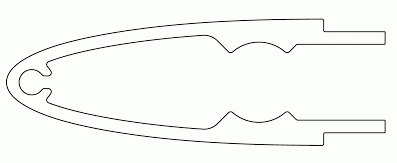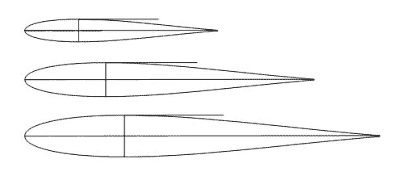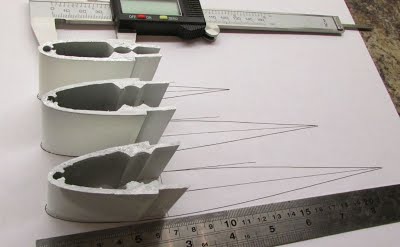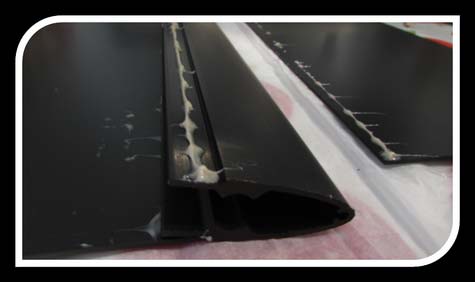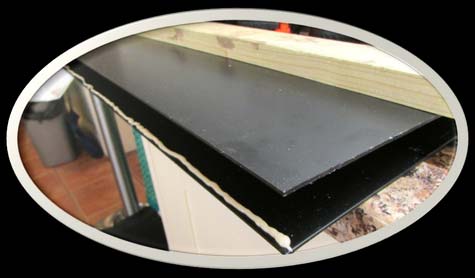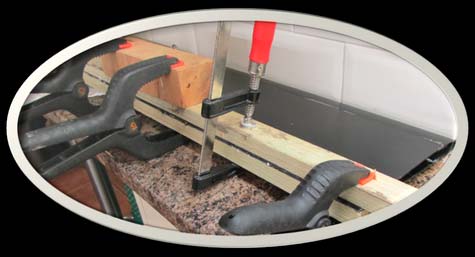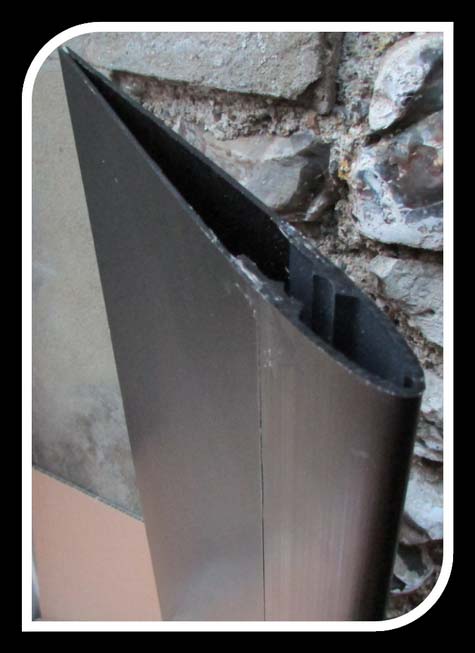
 Custom Search
|
| boat plans |
| canoe/kayak |
| electrical |
| epoxy/supplies |
| fasteners |
| gear |
| gift certificates |
| hardware |
| hatches/deckplates |
| media |
| paint/varnish |
| rope/line |
| rowing/sculling |
| sailmaking |
| sails |
| tools |
| join |
| home |
| indexes |
| classifieds |
| calendar |
| archives |
| about |
| links |
| Join Duckworks Get free newsletter CLICK HERE |
|
|
| Extruded Aluminium Hydrofoils |
by Gareth Roberts
- London - Great Britain - www.windknife.com |
Rudders, Daggerboards and Centerboards are constructed in many different ways from many different materials; an increasingly popular method for durable boats is to use extruded aluminium. Laser has recently switched from a composite board to this type of construction on the Laser Pico and Bug. The main advantage is durability so it is a good match for their durable rotomolded boats. It is possible for the home builder to replicate this type of construction using the windknife extruded nose section available from www.windknife.com The concept of the windknife, is to give the DIY builder the ability to produce, accurate, durable foils of varying sizes, quickly without the need for expensive tooling each time a new size is required. Extruded Aluminium foils have been used successfully on Dinghies such as the Laser Pico, 29er, 59er and Mega Byte for many years. The most important part of an aerofoil is the nose section, this is where most of the work is done and hence where most of the accuracy is required. A noticeable thing about the front section is that the nose of a long thin foil is similar to that of a short fat foil. Below is a NACA0009 section and a NACA0012 section both of similar thickness super imposed, it can be seen that it is really only the rear sections that differ. Therefore it is valid to use the same nose section for the construction of different sized foils.
The windknife uses a common nose section which can be compressed or expanded, the rear section on the windknife is simply 2mm thick aluminium or plastic sheet bonded to the front section.
The nose of the windknife foil is a 22.5mm thick NACA0012 section, this is a good middle of the road section. Equally good for centreboards and rudders. The principle application for these foils is for dinghy and beach catamaran rudders and boards. For rudders these tend to be designed to fit standard rudder stocks which are either 20mm or 25mm thick, the windknife falls between these two at 22.5mm, the principle is that the foilnose section is compressed slightly to be 20mm thick or expanded slightly to be 25mm thick. Centreboards are often thicker, up to 35mm, and the smallest boats such as the optimist might go down to 15mm thick. Therefore the windknife has been designed to make foils between 13mm-35mm thick. In the images below we see three sections, each is a NACA 0012 of three different thickness 15, 22.5 and 30mm thick. The foil nose extrusion has been compressed or expanded to fit the profile, demonstrating the versatility of the extrusion for creating different sized profiles.
The rear section can be created in many different ways depending upon your skill set and requirements. If you have access to aluminium welding that is perfect. For the purposes of this article I built a centreboard similar to a Laser Pico by adhesive bonding two plates to the nose section.
There are many adhesives recommended for bonding aluminium, the foilnose is designed for use with an epoxy adhesive as it includes pips on the bonding area to ensure an optimal 0.25mm thickness for the adhesive. Araldite 2015 is a good choice of adhesive as it is approved for use in the marine industry however other epoxy glues may be used depending upon the application. A 1m length of the foilnose with a high quality bond (17N/mm²) will carry 52 tonnes in shear force (7 African elephants!). It can be seen that there is plenty of headroom for imperfect glue joints. That said surface preparation is the key to a good quality joint. Oxidation is the enemy of a bonded joint. There are specialist treatments for aluminium to aid bonding such as Alumiprep, Alocrom and Bonderite. I recommend using anodised sections. This may not give the strongest joint but it gives consistent and repeatable results. Starting with anodised materials you should thoroughly clean and degrease the surfaces to be bonded, I used Isopropanol. Apply the adhesive, clamp and leave to cure following the adhesive manufacturers recommendations, in my case six hours.
Once cured you are ready to glue the rear sheets, follow the same routine, remembering to thoroughly clean and degrease.
You now have a finished part. If you want to add buoyancy then you could fill the centreboard with aerosol builders foam. If you do that I recommend leaving a gap at the ends and sealing the ends with bathroom silicon sealant.
Happy Building! Windknife Aluminum Foilnose Extrusions are available in the Duckworks Store. |
To comment on Duckworks articles, please visit one of the following:
|
 |



